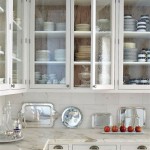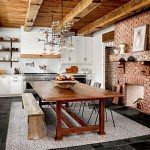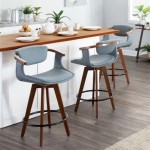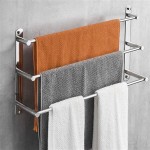Kitchen Nooks With Storage Benches: Optimizing Space and Functionality
Kitchen nooks, also known as breakfast nooks, have experienced a resurgence in popularity, offering a cozy and functional space for dining and relaxation. A particularly effective enhancement to this cozy corner is the incorporation of storage benches. Kitchen nooks with storage benches provide a multifaceted solution, simultaneously addressing seating needs and maximizing storage capacity within the kitchen or adjacent dining area. This design element is particularly valuable in homes where square footage is limited, or where maximizing organizational potential is a priority.
The integration of storage benches into kitchen nooks can be achieved through various design strategies, catering to different aesthetic preferences and functional requirements. Careful consideration should be given to the dimensions of the nook, the style of the kitchen, and the specific storage needs of the occupants to ensure a cohesive and practical final product. This article will delve into the benefits, considerations, and design possibilities associated with kitchen nooks featuring storage benches.
Enhancing Functionality Through Dual-Purpose Design
The primary advantage of incorporating storage benches into a kitchen nook lies in their ability to serve dual purposes. As seating, they provide a comfortable and inviting space for meals, conversations, and even homework. Concurrently, the storage element beneath the seating area offers a valuable repository for various household items. This functionality is particularly beneficial in smaller kitchens or homes with limited storage options.
The types of items stored within these benches can vary widely depending on the needs of the household. Frequently used items, such as cookbooks, placemats, napkins, and serving dishes, can be readily accessible within the bench. Less frequently used items, like holiday decorations, seasonal kitchenware, or even children’s toys, can also be neatly stored away, freeing up valuable space in other areas of the home. The organization of the storage space is paramount to its effectiveness; dividers, baskets, and organizers can be employed to ensure items are easily located and retrieved.
The convenience factor of storage benches extends beyond mere organization. In a busy household, having frequently used items within arm’s reach can significantly streamline daily routines. For instance, a bench stocked with breakfast essentials like cereals, oatmeal, and coffee supplies can create a dedicated "breakfast station," making mornings more efficient. Similarly, a bench containing placemats, napkins, and silverware can simplify mealtime preparation.
From a design perspective, storage benches can contribute to a more streamlined and uncluttered aesthetic. By concealing items that would otherwise be scattered throughout the kitchen, the benches promote a sense of order and visual calm. This is particularly appealing in contemporary kitchen designs that emphasize clean lines and minimalist aesthetics. The benches themselves can be designed to blend seamlessly with the surrounding cabinetry and décor, further enhancing the overall sense of cohesion.
Furthermore, the incorporation of storage benches can contribute to the ergonomic design of the kitchen. By providing a comfortable and accessible seating area, the benches encourage family members to gather and interact in the kitchen, fostering a sense of community and connection. This is particularly important in today's fast-paced world, where opportunities for face-to-face interaction may be limited. The nook becomes a central hub for family activities, enhancing the overall functionality and appeal of the kitchen space.
Design Considerations and Implementation
Numerous design considerations must be addressed when incorporating storage benches into a kitchen nook. The dimensions of the nook are a primary factor, dictating the size and configuration of the benches. The benches should be sized appropriately to comfortably accommodate the intended number of occupants while also providing adequate storage space. Depth is crucial to ensure that it provides ample seating area and enough space to store larger items that might be required. Height is another important factor that must be carefully considered, depending on users' comfort. If the height is too low or too high, it may lead to discomfort and hinder usability of the area.
The style of the kitchen is another important consideration. The benches should complement the existing cabinetry, countertops, and flooring to create a cohesive and visually appealing space. In a traditional kitchen, for example, benches made from stained wood with classic details would be appropriate. In a modern kitchen, benches with clean lines and a minimalist aesthetic would be more suitable. The choice of materials, finishes, and hardware should all be carefully considered to ensure compatibility with the overall design scheme.
The type of storage mechanism employed in the benches is another important factor. Lift-up seats offer a simple and straightforward storage solution, providing easy access to items stored within the bench. Drawers offer a more organized storage solution, allowing items to be separated and easily retrieved. Hinged doors provide a more concealed storage solution, which may be preferable for items that are not frequently used. The choice of storage mechanism will depend on the specific storage needs of the household and the desired aesthetic.
The comfort of the benches should also be considered. Cushions and backrests can be added to enhance comfort and support. The choice of fabric should be durable, stain-resistant, and easy to clean, particularly in a kitchen setting. The benches can also be customized with decorative pillows and throws to add a touch of personality and style. Careful attention to these details will ensure that the benches are not only functional but also comfortable and inviting.
Accessibility is a key element that must be integrated into the design. Ideally, the seats of the bench should be easily lifted to access items stored below. If drawers are incorporated, they should glide smoothly and effortlessly. The overall design should promote ease of use and prevent any unnecessary strain or discomfort. For occupants with mobility issues, special consideration may be required to ensure that the benches are accessible and safe to use.
The location of the kitchen nook itself is a crucial factor in its functionality and appeal. Ideally, the nook should be situated near a window, providing natural light and views of the outdoors. Proximity to the kitchen workspace is also important, allowing for easy access to food preparation areas. The nook should be situated in a location that is conducive to conversation and relaxation, away from high-traffic areas and distractions.
Material Selection and Construction Techniques
The choice of materials for the construction of storage benches is critical to their durability, aesthetics, and overall functionality. Solid wood is a popular choice, offering strength, durability, and a timeless aesthetic. Hardwoods, such as maple, oak, and cherry, are particularly well-suited for storage benches, providing resistance to wear and tear. Softwoods, such as pine and cedar, can also be used, but they may require more frequent maintenance and are more susceptible to damage.
Plywood is another commonly used material, offering a cost-effective alternative to solid wood. High-quality plywood is strong, stable, and resistant to warping, making it a suitable choice for storage benches. Plywood can be painted, stained, or veneered to match the surrounding cabinetry and décor. However, it is important to select plywood that is free of formaldehyde and other harmful chemicals, particularly in a kitchen environment.
Laminate is a durable and easy-to-clean material that is often used for the surfaces of storage benches. Laminate is available in a wide range of colors, patterns, and textures, allowing for a high degree of design flexibility. Laminate is also resistant to scratches, stains, and heat, making it a practical choice for a kitchen setting. However, laminate is not as aesthetically appealing as solid wood or veneer, and it can be prone to chipping or peeling if not properly installed.
The construction techniques used to build the storage benches are equally important to their durability and functionality. Frames should be constructed using robust joinery techniques, such as mortise and tenon joints or dovetail joints, to ensure structural integrity. The seats should be reinforced with sturdy supports to prevent sagging or warping. The hinges and hardware should be of high quality and properly installed to ensure smooth and reliable operation.
Finishing techniques can significantly enhance the appearance and durability of the storage benches. Staining can be used to highlight the natural grain of the wood, creating a warm and inviting aesthetic. Painting can be used to create a more modern and contemporary look. Sealing the wood with a protective coating can prevent moisture damage and extend the lifespan of the benches. The choice of finishing technique will depend on the desired aesthetic and the type of wood used.
Ventilation is an important consideration when designing storage benches, particularly in a kitchen environment where moisture and humidity levels may be high. Ventilation holes can be incorporated into the design to allow air to circulate within the bench, preventing the build-up of mold and mildew. The benches can also be designed with removable or breathable liners to further enhance ventilation.
The integration of electrical outlets and USB ports into the storage benches can add an additional layer of functionality. These outlets can be used to charge electronic devices, such as phones, tablets, and laptops, creating a convenient workspace within the kitchen nook. The outlets should be strategically placed to minimize clutter and maximize accessibility. Ensuring compliance with all relevant electrical codes and safety standards is crucial during the installation process.

Comfortable Versatile Breakfast Nook 10 Step Build Your Projects Obn

Linon Tobin 2 Piece Farmhouse Corner Dining Nook With Table And Storage Seats 4 5 White

85 Cozy And Inviting Breakfast Corners Digsdigs

30 Breakfast Nook Bench Ideas That Will Cheer Up Your Mornings

Kitchen Nook Storage Bench Diy Paul Tran

Custom Kitchen Nook With Storage Drawers Etsy Sweden

30 Breakfast Nook Bench Ideas That Will Cheer Up Your Mornings

Tms Knox 3 Piece Kitchen Furniture Set With Seating Includes Storage Nook Table And Bench White Natural Walmart Com

1 Pc Natural Wood Top Breakfast Nook Corner Booth Bench Storage Office Organizer Ebay
:strip_icc()/101390239-736f2f594c90403ebed36208f28b2690.jpg?strip=all)
Space Savvy Breakfast Nook Banquettes








